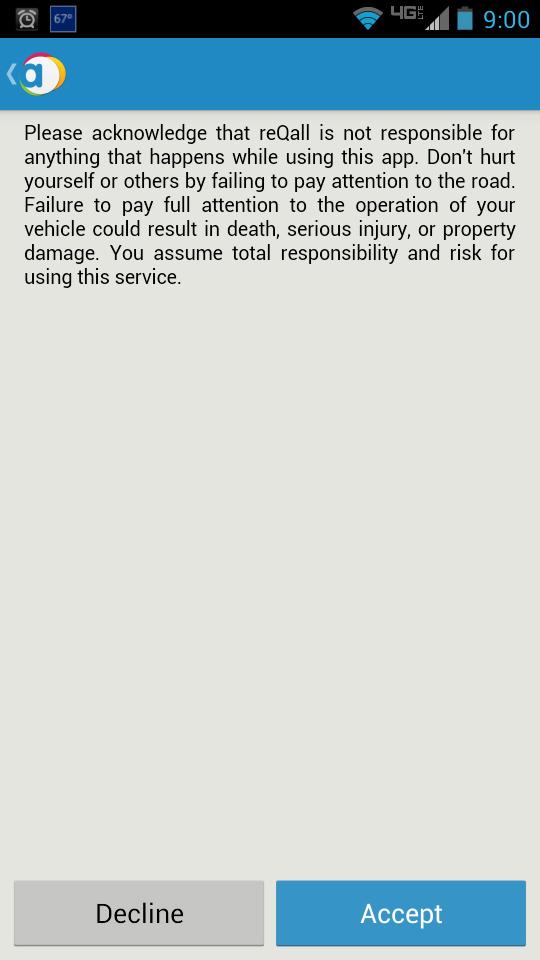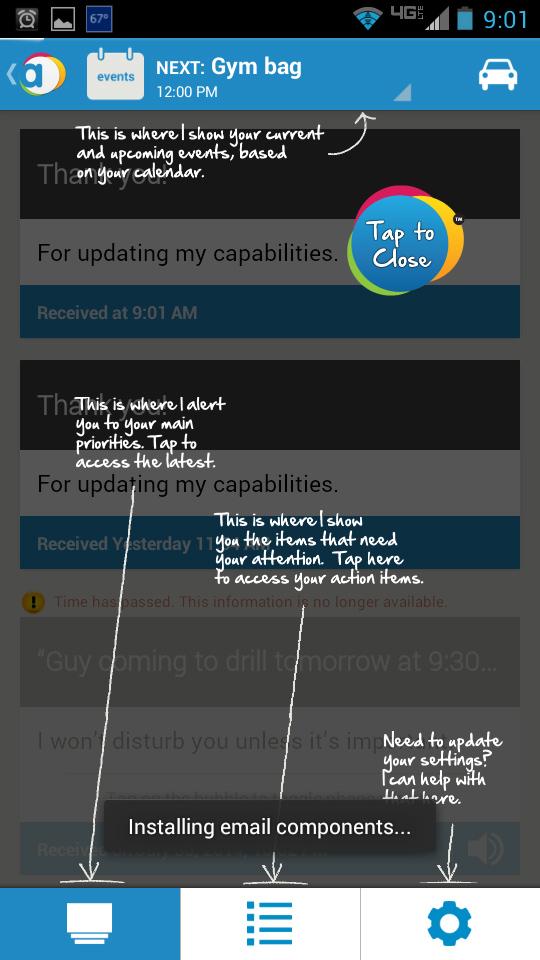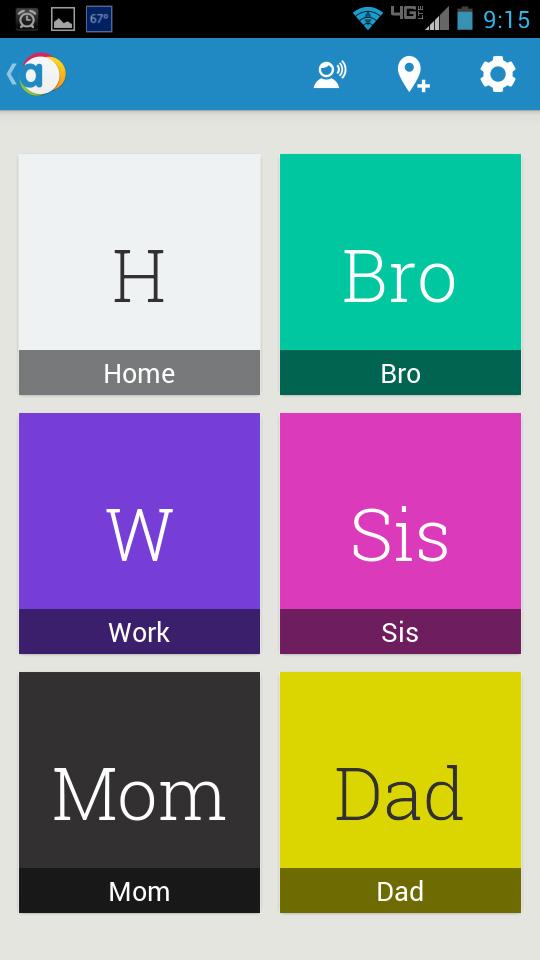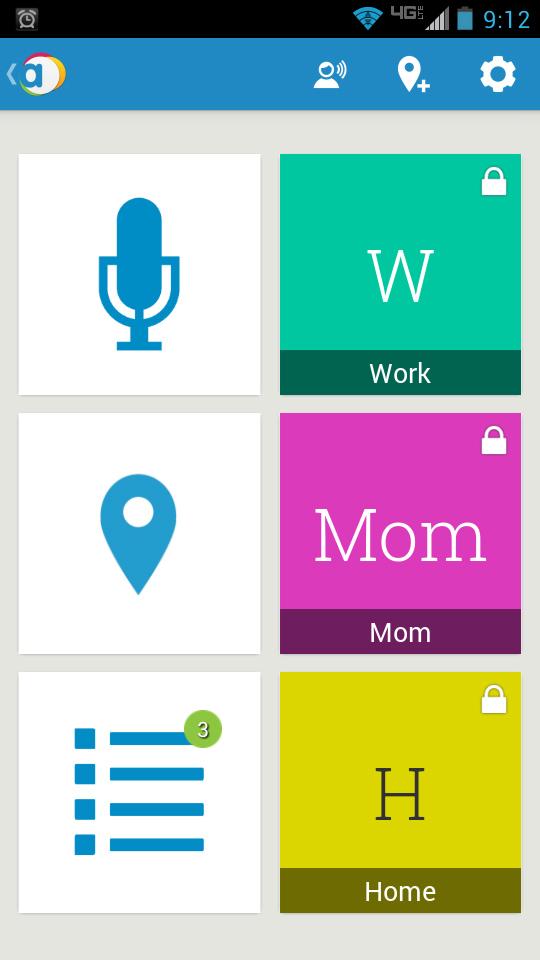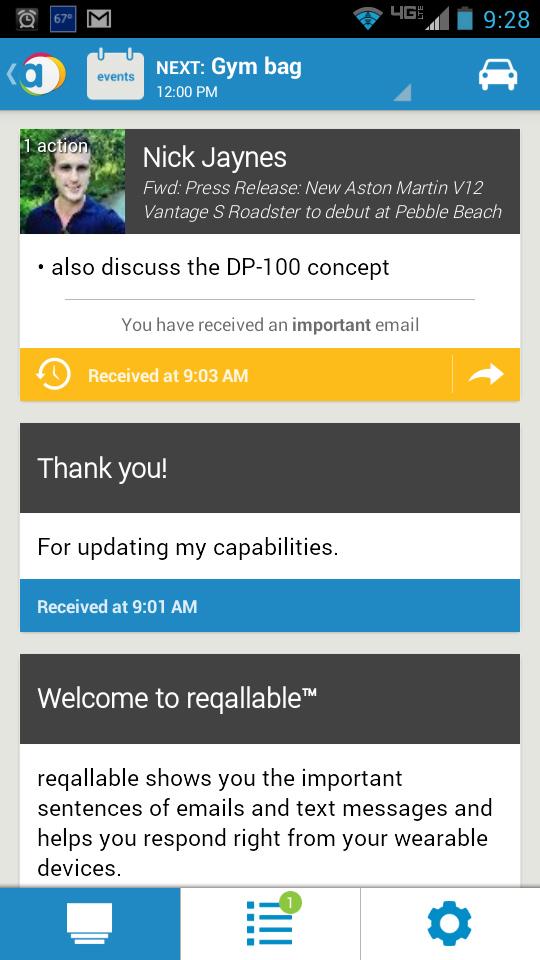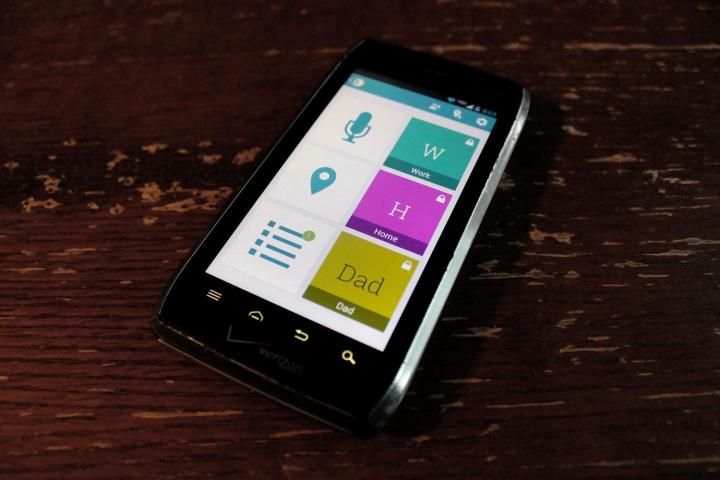
Hell, I can’t tell you how many times I’ve seen something like that this week.
That’s where ReQall’s reqallable InCar app comes in. It’s an Android app that manages your messages while you drive, allowing motorists to interact with their friends, family, and co-workers nearly hands-free. It reads texts and body sentences of emails aloud, using voice prompts to help drivers respond without ever taking their eyes off the road.
In theory, an app like this could cut down on multi-tasking motorists and – consequentially – make ours roads safer. But does it actually work?
Overview
The simple answer is yes, but occasionally something falls through the cracks. A few emails and texts got caught in the buffer on my trial runs, but overall, the app is actually quite sharp and accurate. It spelled my girlfriend’s oft-misconstrued name right, so that’s a plus … and, no, I’m not going to tell you what her name is.
As far as aesthetics, InCar has a nice, clean look to it.
InCar mode is what you’ll be using on the road most of the time. It has six separate blocks. The first three are made up of the speech interface (to create new messages or calls with one click), a navigation shortcut, and a notifications box for pending messages.
The other three slots are reserved for your “favorite” contacts, which the app chooses for you based on whom you contact the most, who’s on your calendar, and who is near you. You cannot change these yourself; InCar automatically updates these over time depending on whom you’re interacting with.
I get it, it’s trying to be convenient and smart, but I think it would be better to give users the option to choose for themselves. Swipe the screen to the left, however, and six more contact boxes appear, which you do have control over.
It’s important to note that you can still interact with people who aren’t added to InCar’s integrated contact list, it’s just more involved to message them unprompted.
Swipe the screen the other direction and you’re greeted by a color-coded expanded screen. The expanded screen displays emails, SMS messages, and upcoming events in a streamlined, easy-to-read list.
Interactions
Setup is a breeze with Reqallable. After an “I will not app-and-drive” disclaimer, you associate your email account with a couple clicks, and you’re pretty much good to go.
It’s is a very simple, easy app to use, and it’s a must-have for traveling professionals and amateur chatterboxes alike.
If you get a text, the app alerts you with a pleasant chime and says, “You have received an SMS from [name of sender], would you like to reply?”
From there, you can either dictate a text vocally or prompt a call without ever touching the screen. The process is straightforward and works the same with emails, although I found those notifications to be slightly less reliable.
One important note: In the settings page, under the SMS and email tabs, make sure to select “Notify me when the message contains anything” and “Notify me when the message is from anyone” options, or else only some of the messages will come through.
What Reqallable basically does is give Android users their own “Siri lite.” The onboard voice may not be as conversational as Apple’s intelligent personal assistant, but after seeing the movie Her, that might not be a bad thing. You don’t want people falling in love with their phones more than they already have. There’s even a speaking help guide, but you probably won’t need it.
Conclusion
At 33.93 MB, Reqallable InCar is of average size for an app of this nature, but, according to my Droid’s onboard display, it only used about three percent of the battery. Furthermore, it’s free, and free is good.
It’s is a very simple, easy app to use, and outside of a few issues with email notifications, it’s a must-have for traveling professionals and amateur chatterboxes alike. Whether its problems are inherent or the fault of the Android operating system is anyone’s guess, though.
I’ll put it this way: I’ve had more issues with the Android’s in-house text recognition software than I had with this app. After all, voice-to-text software is inherently peanut butter airport.
Sorry, I was dictating that one.
Highs
- Enables hands-free communication while driving
- Easy to use interface
- Clean look
- Simple setup
Lows
- Some consistency issues
- No option to change “favorite” contacts
- Confusing name
Editors' Recommendations
- Don’t let the gimmicks fool you. The Ioniq 5 N is a serious track car
- Your car insurance company knows more about you than you think
- Modern cars take touch controls too far. This company found a balance
- Let this daredevil drone take you on a tour of the Mercedes-Benz Museum
- BMW and Harman want to bring 5G to your car. It’s harder than you’d think
